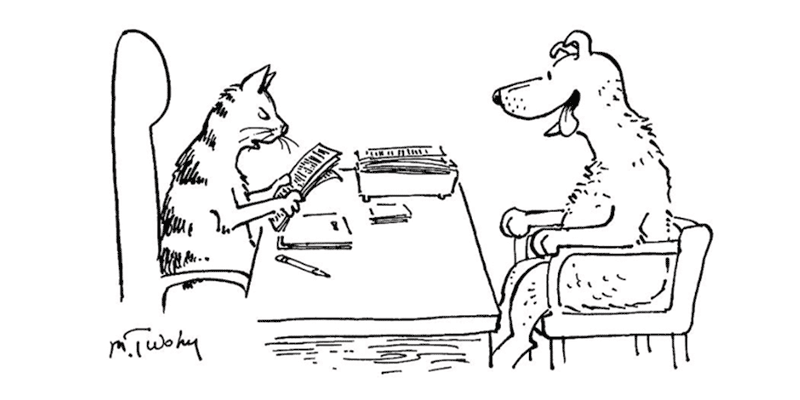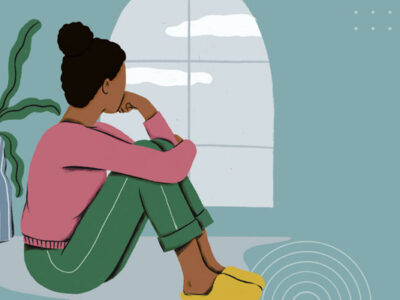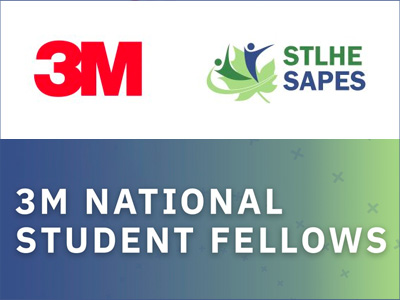What is Peer Editing and Why Use It?
Peer editing, defined for a classroom context, is a process in which students or learners take on the role of the teacher in order to check or comment on work produced by another student or learner. It can take the form of checklists, written critiques, verbal conferencing, or a combination thereof.
The obvious advantages to peer editing have made it an increasingly popular teaching strategy in classrooms from elementary schools to universities. Large class sizes and increased instructor workloads often make it difficult for instructors to give detailed feedback on every piece of work that a student produces; looking to students themselves as valuable resources for response and critique makes a lot of sense.
As well, any instructor who has asked students to edit their own work with a mind to revision knows that there is often great resistance to self-editing. This is by no means limited to students—we all find it difficult to look at our own work objectively, and many of us are reluctant to revisit work that we feel is “done.” Peer editing not only allows the writer to see the work through another person’s eyes, it develops the collaborative skills that often go into creating a project or book or product in a “real-world” context.

Who I Am and What I Offer
I’ve taught creative writing in high schools, public workshops, and university classrooms across Canada, and I’ve and mentored individual writers through both writer-in-residence programs and private consultations. I am also, though, an editor of books of fiction and non-fiction, and it’s my editing practise that has made me look at the process of peer editing in a new way.
In over ten years of professional editing, during which time I’ve worked with everyone from beginning writers to Governor General’s Award‒winners, I’ve developed a keen appreciation for how challenging editing is. Engaging with another person’s work, whether it be an engineer’s process description, a fellow teacher’s lesson plan, or a short story about colonizing Saturn, calls for a level of concentration and analysis that few other of our endeavours require. When you add responsibility to that engagement—you are the editor paid by the publishing house to guide the writer to the best possible version of her work; you are the classroom instructor tasked with critiquing and evaluating a student’s essay; or you are the student asked to give feedback on the work of a peer—the level of engagement is even higher. Putting ourselves through the paces of editing another’s work is one of the most rigorous ways of using our skill sets and brain power, and one of the most effective ways of learning new things. Conversely, getting detailed feedback about a piece of writing from an attentive, engaged reader is the best way to find out whether that piece is communicating what we wish it to. It is, as we say, “writing gold.”

Peer Editing in the Classroom
As soon as you sit down to design a rubric for assessing student writing, you come face to face with the sheer number and variety of criteria involved—everything from the minutiae of spelling and grammar to the “big-picture” exigencies of clarity, concision, and persuasion. It’s little wonder that students can find it overwhelming to edit their own work, and that they need concrete guidance when tasked with critiquing the work of others.
I will discuss a few different approaches to peer editing, but first, a caveat: a peer-editing session is not a vacation for the instructor. Yes, as mentioned, it can be an effective way of managing large classes: it often isn’t possible, as an instructor, to read and respond immediately to each piece of writing a student produces, and so in a class where students are asked to produce writing often (an approach I applaud), peer review can increase the number and immediacy of responses a writer receives. But the instructor should be an active participant in the peer editing process at every stage, from modelling effective critiquing methods before the peer review even begins, to monitoring and commenting upon the review once it’s in process. Take this summation of a three-week peer-review of a formal paper assignment, from Melissa Trombo:
I ask students to turn in a draft for peer review during the first week. I ask students to bring two copies of their drafts so that during the class session I can do my first read of their work. This allows me to answer any immediate questions that come up during peer reviews or address concerns they want to begin working on right away. I provide detailed student feedback in the second week. I have a larger class discussion with the students about patterns I see in the writing so that we can have an open dialogue and share concerns. The final draft is due in the third week. Students are asked to submit the original draft, my comments, both peer reviews and their final draft. This way I can evaluate the process from top to bottom. For instance, if both peer reviewers and I suggest a revision to the introduction, I will expect a student to address this concern. In reviewing feedback, I encourage students to listen to their peers and to my feedback but ultimately to make their own decisions about how they want to revise their essays. The grade I assign is an assessment of where each essay is in relation to the progress I think it should make in the class.[1]
Whew, right? But this is actually a realistic description of the planning and time it takes to use peer reviewing/editing effectively. Students should not be expected to write and critique in a vacuum; as valuable as their fresh perspectives on each others’ work are, the instructor should plan to be constantly involved as a guide and as assessor. Both the writer and the peer editor should be held accountable for their work—in fact, that accountability is one of the great advantages of using peer review with your students.
The peer editing model of workshopping writing, by breaking students into pairs or small groups rather than using the “around-the-table” model of workshopping a piece with the entire class, does allow for reviewers to spend more time reading, editing, and critiquing a given piece. As a result, the peer editing process can be more detailed, accurate, and in-depth than the full-class workshopping model allows. Students have time to truly engage with one another’s work, discuss their points of view in detail, and respond to each other’s reactions. And, not least, they have more time to actually read the piece of writing in class. Remember that what you devote class time to as an instructor sends a strong message to your students about what kinds of learning and practises are valued. By allotting significant class time to reading and writing, you are signalling that these are activities that are valued and rewarded in the world.
That said, be realistic about what you hope to accomplish in a peer editing session. Students can easily feel overwhelmed by the responsibilities they’re given in this process, and it’s important not to overload them. You will need to carefully consider the amount of class time you’ll have for a specific activity, and tailor your instructions and, if using, checklists accordingly. Speaking of which…
To Checklist or Not To Checklist
That, if not the question, is certainly a big one.
First, let me give you a couple of examples. This first one is a bare-bones writing checklist suitable for students in grades 3‒5. (Note: I’ve adapted these examples from an amalgam of open-learning online resources, tweaking them here and there. For example, the edict about the dictionary under “Spelling” on this one is my own addition—take it from a seasoned editor: the dictionary is one of the most underrated (and, sadly, underused) resources around.
I like the Self- and Peer-Editors’ Checklist because it is clear and easy to use, and has a finite, manageable number of items. Ideally, the teacher will have the writer and peer editor fill out their checklists separately, then they will get together to talk over the similarities and differences in their results. Ideally, too, the teacher will allot enough time for each stage of this process (reading, rereading, filling out the checklist, exchanging results, discussion, and teacher participation in/feedback on the discussion). Remember, even at this simple a level, reading and editing takes significant time!
Like any resource, this checklist can and should be adapted with your particular learners’ needs and focus in mind. Categories could, for example, be geared toward high school or undergraduate essay writing in any subject, and include such areas as a clearly stated thesis, appropriate use of paragraphing, detail and support for topic sentences, subject-specific vocabulary, and sentence clarity and variety.
Next, let’s look at a very different approach. The Peer-Edit Response Form is also modelled for younger learners, but can easily be adapted for any level and context. The focus here is on more subjective questions rather than mechanics, and admittedly it probably can’t properly be called a “checklist” at all.
This kind of open-ended checklist can be adapted to any context, including for complex projects and graduate-level and professional writers. A peer-editing checklist for an engineering and design course might include categories like the readability or relevance of charts and diagrams, the clear and parallel listing of materials to be used, and the accuracy of equations. A checklist for a student-teacher’s lesson plan could well ask, “Have the lesson outcomes been written in terms that are observable and measurable?” and “Could the lesson plan be easily understood by a substitute teacher?”
Clicking through the riot of peer-editing checklists that are available online can be a bit of a maddening exercise because of their sheer volume and variety. But for me, the value of these existing tools is not so much how useful they are in themselves, but in how reading them sparks ideas for better questions or, at least, ones more specifically geared to your particular students’ needs. Once you get started on planning your assessment rubric, checklist or no, you’ll realize that identifying categories is (at least relatively) the easy part. The hard part, and the important part, is making them work in a classroom setting. More on that to follow. In the appendix to this document, I’ve included a “Revision Checklist” that I’ve used with my creative writing classes—you are welcome to use it or adapt it for your own writing, revising, or teaching purposes. If you do give it to students, again I suggest you tailor it to the specific student or class you’re giving it to; some of the items on the list may well need tweaking or omitting according to their needs (and your philosophy!), and you may have ideas for others. I make it a rule to never use a handout with a class (even my own) unless I’ve gone over it anew and adapted it to that class specifically.

Above all, remember that teaching any kind of writing, like writing itself, is a creative process. So, too, should be your approach to peer editing. A student in a workshop I recently gave asked me, “How do you determine the line between leaving creative writing open and authentic while still providing enough guidance for [students] to succeed?” I told her, honestly, that I didn’t have an answer to that excellent question, but that we should strive, as educators, to keep that tension always in mind. It’s a tension that I think applies to any discipline of study: creative thinking is just as important in nursing or business management as it is in English or creative writing; so, too, are the clear parameters that allow us to make honest and useful assessments of student work. Developing a peer editing practise in your classroom can help both you and your students address the tension between the freedom to create and the need to refine and revise in practical and meaningful ways.
Cartoon Credits
- Cullum, Leo. “Never, ever think outside the box.” The New Yorker, November 30, 1998.
- Twohy, Mike. “Overuse of the Exclamation Point.” The New Yorker, April 15, 2019.
- Wheeler, Shannon. “’‘Grrr’ is not a word.” The New Yorker, July 2, 2012.
[1] Trombo, Melissa. “Workshop and Peer Review Process” in “Teaching Autoethnography: Personal Writing in the Classroom.” https://milnepublishing.geneseo.edu/teaching-autoethnography/chapter/4-workshop-and-peer-review-process/. Accessed February 5, 2020.
Melanie Little is an award-winning author and editor of fiction and non-fiction. As the inaugural editor of Calgary’s Freehand Books, she was awarded the Book Publishers’ Association of Alberta’s Lois Hole Award for Editorial Excellence, and under her direction Freehand was named BPAA’s Publisher of the Year and was a finalist for Small Press Publisher of the Year at the Canadian Booksellers’ Association Libris Awards. Subsequently she was the Senior Editor of Canadian Fiction at House of Anansi Press, where she edited authors including Lisa Moore, Rawi Hage, Sheila Heti, Pasha Malla, Patrick deWitt, and Lynn Coady. Books she has edited have won the Giller Prize, the Governor General’s Award, the Commonwealth Writers’ Prize, the Quebec Writers’ Federation Prize for Fiction, and the Writers’ Trust Fiction Prize, and have twice been finalists for Canada Reads. She is currently a freelance editor in Toronto, editing fiction and non-fiction for clients including Coach House Books, McClelland and Stewart, Doubleday Canada, and House of Anansi Press.
Melanie has taught creative writing at Dalhousie University, the University of Alberta, and at workshops across Canada. Her debut collection of stories, Confidence, was shortlisted for the Danuta Gleed Award and selected as a Globe and Mail Top 100 Book. Her novel-in-verse for young adults, The Apprentice’s Masterpiece, was a Canadian Library Association Honour Book, a gold medalist at the Independent Publisher Book Awards, and a White Raven selection for the International Youth Library in Munich. She is currently writing a novel for which she has received funding support from the Canada Council for the Arts, the Ontario Arts Council, and the Toronto Arts Council. She holds an Master of Fine Arts in creative writing from the University of British Columbia and a Master of Arts in English literature from the University of Toronto.









Comments